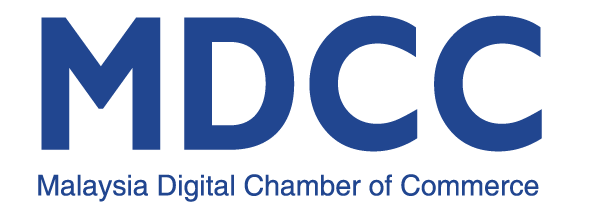

Analytics, automation, and manufacturing technology – better known collectively as Industry 4.0 – have emerged as industry disruptors and growth drivers in all countries, and Malaysia is no exception. Leveraging Industry 4.0 technologies is expected to increase productivity by 30% across all sectors in Malaysia by 2030, which will give rise to better services, more skilled talent and increased production of higher-value products.
Industry 4.0 and digital technologies are also key enablers of a sustainable future, which is one of the pillars of the 12th Malaysia Plan (2021-2025). Recognizing this, Malaysia has developed strategies such as the National IR 4.0 policy to fulfil its vision as a leading digital economy. However, this requires the participation of all stakeholders; asset-intensive enterprises, for example, must find effective ways to access, analyze and visualize their operational data to contribute to Malaysia’s evolution.
The growth and momentum of Industry 4.0 in Malaysia
By 2025, the International Trade and Industry Ministry (MITI)’s New Investment Policy (NIP) aims to expand the contribution of the digital economy to 22.6% of Malaysia’s gross domestic product (GDP). It also lists digital transformation and connectivity as being crucial to empower Malaysian businesses to access greater global opportunities and position Malaysia as a regional leader in digital economy, as well as a hotbed for tech innovation.
Having identified Industry 4.0 as a key area of focus in its national transformation efforts, the Malaysian government has been investing heavily in developing the infrastructure needed to support the adoption of Industry 4.0 technologies. This includes accelerating nationwide 5G coverage and building a second 5G network once 5G coverage has reached 80 percent of populated areas, as well as establishing the Centre for the Fourth Industrial Revolution (C4IR) to realize the overarching vision set out under the Malaysia Digital Economy Blueprint.
With this infrastructure in place, both the Malaysian government and Malaysian enterprises will be able to maximize the use of technology for digitalization and automation as part of Operational Technology (OT). This transition to a smarter workplace and operations will be instrumental in mitigating the impact of perennial issues – such as the ongoing migrant labour shortage – on economic progress and productivity.
A connected ecosystem is essential to realizing the full Industry 4.0 vision
In an Industry 4.0 environment, a wide range of devices and systems, including sensors, wearables, machines, controllers, and other OT devices all generate vast amounts of data in real time. This data needs to be concurrently analyzed and acted upon to improve safety, productivity and efficiency. High-speed, reliable and secure connectivity with network availability up to six 9s – which amounts to only a maximum of 31.56 seconds of unscheduled downtime per year – is essential to enable such machine communications.
Connected machines in smart factories, for instance, enable optimized machine speed and performance via artificial intelligence and automation, as well as being able to produce more valuable production insights and freeing up the limited supply of human workers for higher-value tasks. This is made possible with Industry 4.0 infrastructure, such as private wireless networks for faster machine-to-machine communication, cloud-based digital data control for real-time process management, and flexible robots to improve productivity and agility.
The Global Lighthouse Network, launched by the World Economic Forum and McKinsey & Company in 2018, highlights how manufacturing leaders who have successfully embraced Industry 4.0 transformation – known as Lighthouses – are demonstrating tangible improvements in productivity, sustainability, agility, speed-to-market and customization versus over 70% of their peers in the ecosystem who have not. Additionally, this early adoption provides exponential benefits as the long-term agility enables them to experience a much higher return on investment than others with traditional systems.
Maximizing efficiency and productivity with connected devices
As the digital revolution continues to gain traction across modern industries, connected industrial devices will be essential for organizations that are looking to remain competitive in an increasingly interconnected world. According to a GlobalData and Nokia survey of early private wireless adopters worldwide, 64% of respondents said they already use connected industrial devices, while another 27% are considering them for the near future. This underscores the vital role of connected devices in the Industry 4.0 technology mix.
To facilitate rapid onboarding and deployment, many of these connected devices – such as field routers, wearables and ruggedized smartphones – can come pre-configured for the user’s private wireless networks, thereby simplifying inter-operability in especially challenging field environments. They also possess built-in device management capabilities that allow zero-touch onboarding and remote management of both the Internet of Things (IoT) and smart devices, simplifying scaling up to larger networks and optimizing resource deployment.
Fully realising Industry 4.0’s potential
The real-time data collected by industrial devices is critical to maximizing efficiency and productivity, but managing both machine and data can often be a challenge. However, if asset-intensive enterprises in Malaysia can fully leverage their data and optimize their operations through Industry 4.0 technology, this presents a compelling business advantage that will allow them to remain competitive in an increasingly interconnected world.
A connected ecosystem is the foundation from which countries and industries can fully realize the potential of Industry 4.0. With governmental infrastructure and support, as well as proactivity among businesses to embrace the digital transition, it is only a matter of time before connected devices become the new standard within enterprises – and Malaysia becomes that much closer to a sustainable, digital-driven future.



Leave a Comment